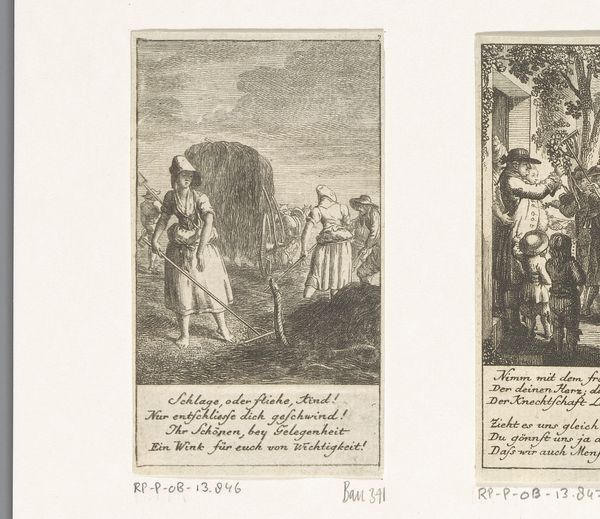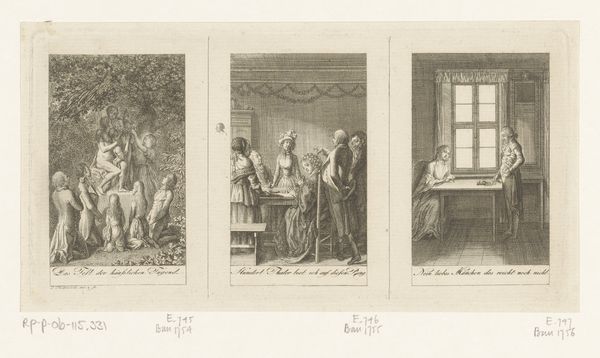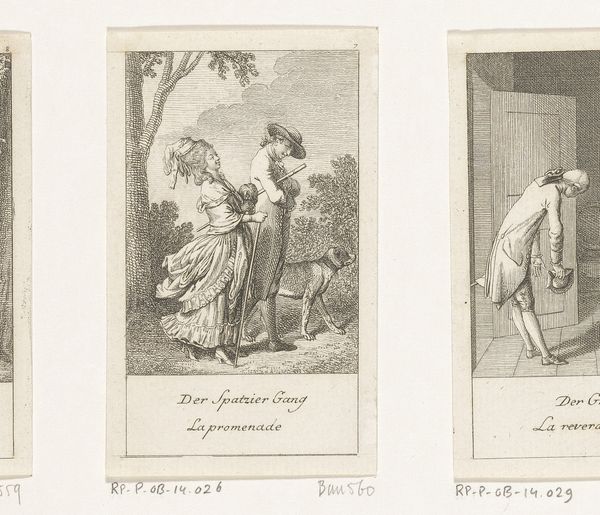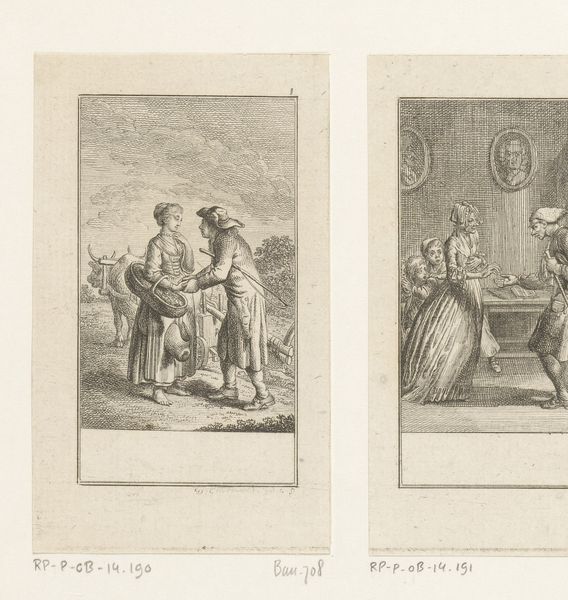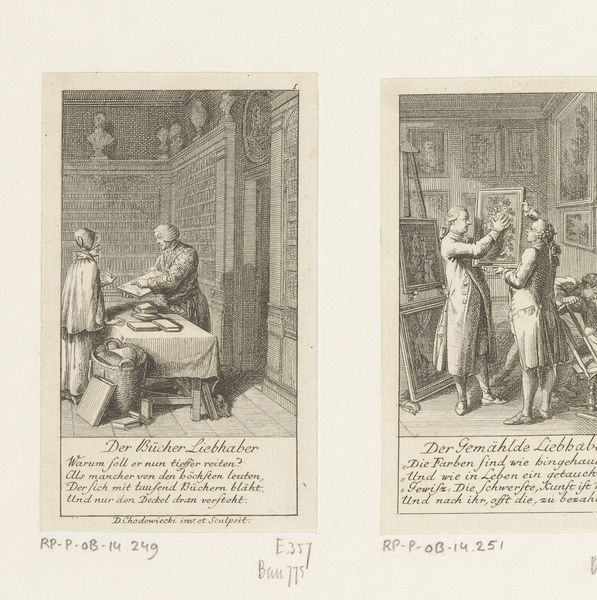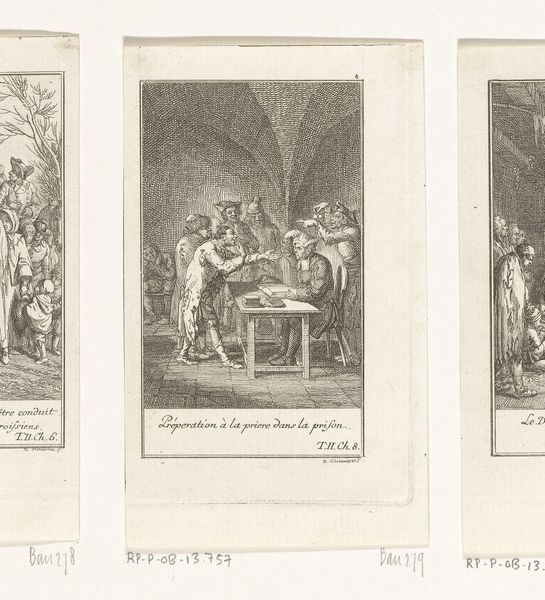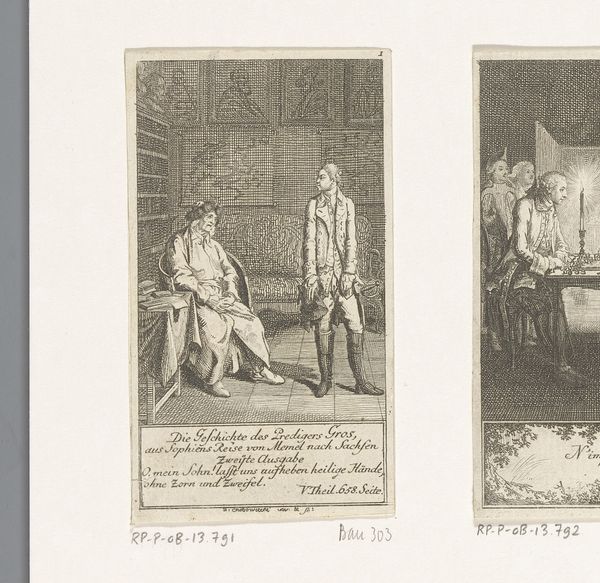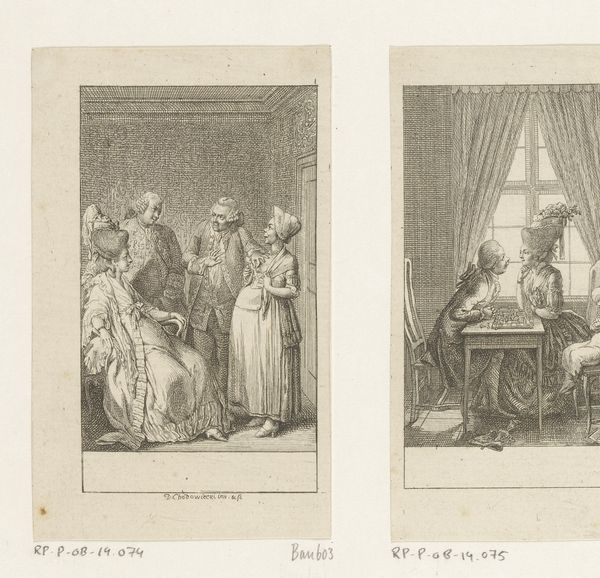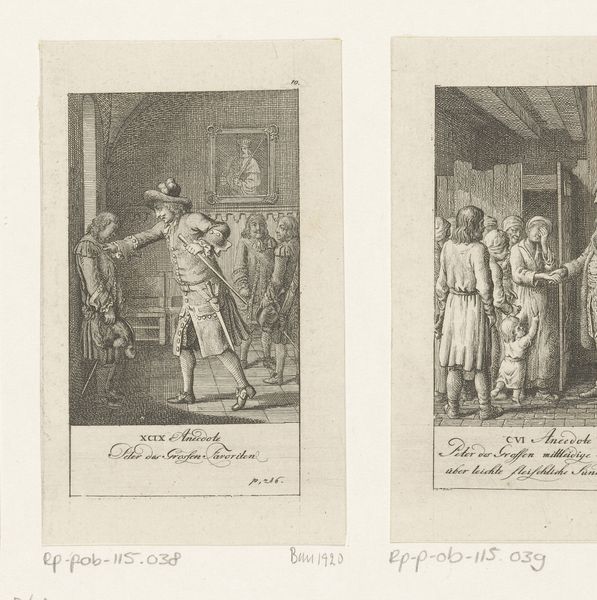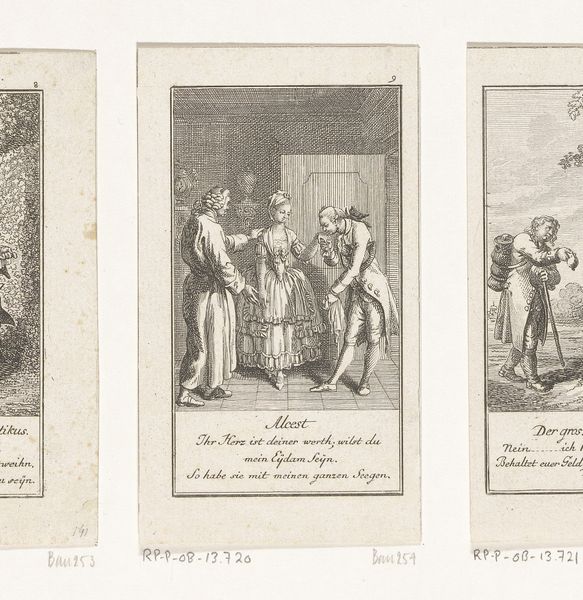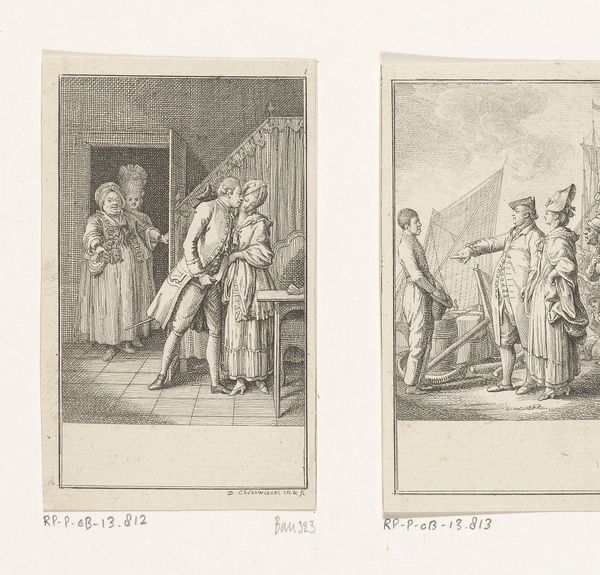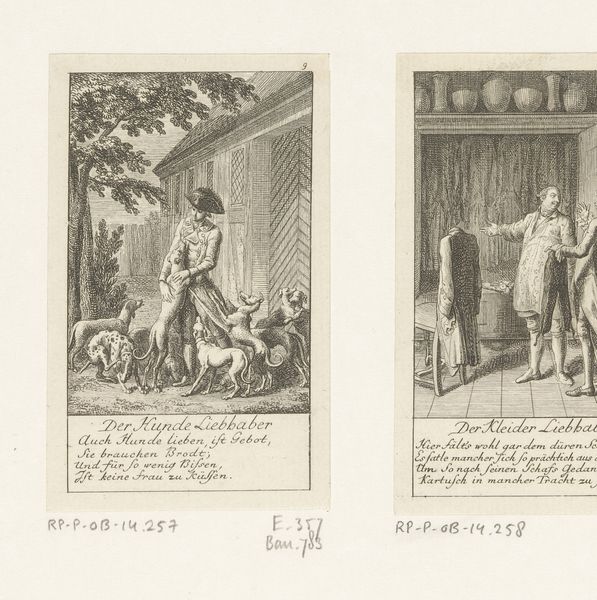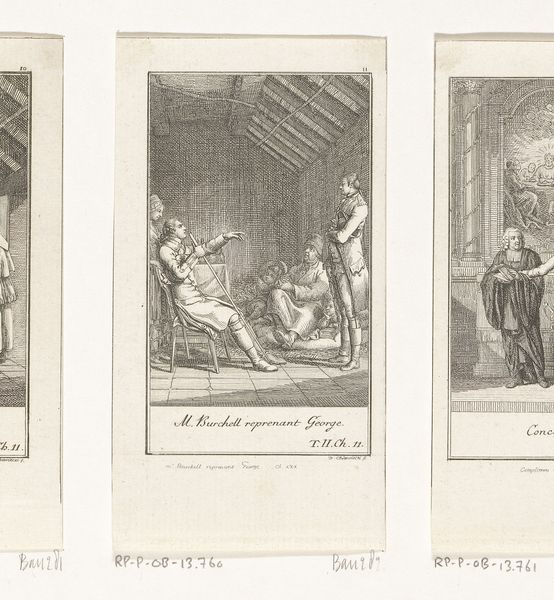
Dimensions: height 92 mm, width 52 mm
Copyright: Rijks Museum: Open Domain
Curator: This engraving is titled "Oktober" and was created in 1777 by Daniel Nikolaus Chodowiecki. It's currently held here at the Rijksmuseum. What strikes you about it initially? Editor: The level of detail for such a small print is incredible. There's a robust quality in the etched lines, depicting a mundane, yet somewhat celebratory scene—the kind of social interaction readily reproduced on a commercial scale. Curator: Indeed. Chodowiecki was a master of the engraving technique, producing many such works intended for a growing middle-class readership. His art reflects the values and concerns of that emerging public sphere. The scene appears to be indoors, with a butchered ox hanging in the background, while figures toast at a table. Editor: The ox dominates the scene. Its slaughter speaks volumes about the labor and materials that sustained the lifestyles being represented. It makes me consider where such everyday practices would feature within high art of the time, or were such subjects left for reproduction in more functional formats? Curator: That is a key point. Prints like these brought the everyday into the realm of art. We see genre scenes mixed with a didactic intent, reflecting Enlightenment ideals. The text below certainly suggests a moral message about shrewdness and commerce. Editor: Precisely. And the way that moral message is conveyed speaks to an interesting aspect of materiality— the relationship between production and reception of print. Mass production brings moral instruction, wrapped up neatly as popular imagery to the increasingly literate and relatively affluent burghers. Curator: The placement of the dead ox looming over the jovial drinkers can be read as a commentary on their indulgence, and also how society depends on skilled, if often overlooked labour to enjoy comfort and plenty. It is a picture of how societal consumption relies on these sometimes gruesome, or otherwise unspoken aspects of commercialism. Editor: So, looking at "Oktober" then, we can glean fascinating insights, not just into artistry, but also how artistic production interacted with labour and values. Curator: It reveals so much about the period, its attitudes and also speaks to our dependence on many unseen elements and acts.
Comments
No comments
Be the first to comment and join the conversation on the ultimate creative platform.

